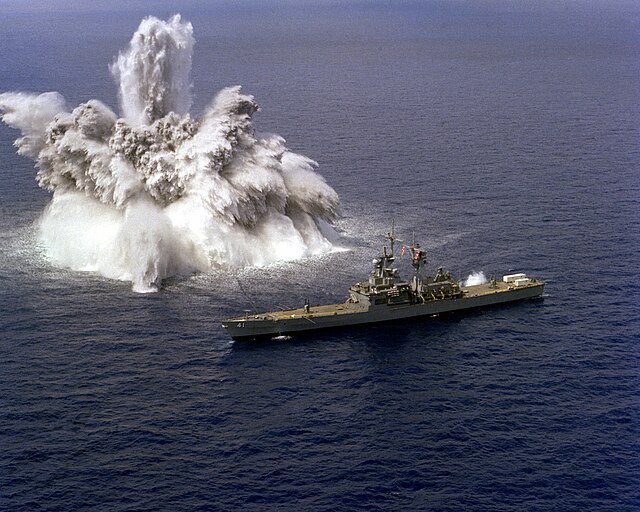The Virginia class were four nuclear-powered, guided-missile cruisers that served in the United States Navy until the mid-to-late 1990s. The double-ended cruisers were commissioned between 1976 and 1980. They were the final class of nuclear-powered cruisers completed and the last ships ordered as Destroyer Leaders under the pre-1975 classification system.
USS Virginia
Virginia underway off the coast of Cape Henry, Virginia (VA)
Artist's impression of CGN-42, the planned AEGIS version of the Virginia-class
A shock trial of Arkansas in 1982
Nuclear marine propulsion
Nuclear marine propulsion is propulsion of a ship or submarine with heat provided by a nuclear reactor. The power plant heats water to produce steam for a turbine used to turn the ship's propeller through a gearbox or through an electric generator and motor. Nuclear propulsion is used primarily within naval warships such as nuclear submarines and supercarriers. A small number of experimental civil nuclear ships have been built.
When the nuclear-powered Arktika class 50 Let Pobedy was put into service in 2007, it became the world's largest icebreaker.
A nuclear fuel element for the cargo ship NS Savannah. The element contains four bundles of 41 fuel rods. The uranium oxide is enriched to 4.2 and 4.6 percent U-235
In addition to nuclear-powered aircraft carriers, the United States once operated nuclear-powered cruisers.
The nuclear-propelled French submarine Saphir returning to Toulon, its home port, after Mission Héraclès








